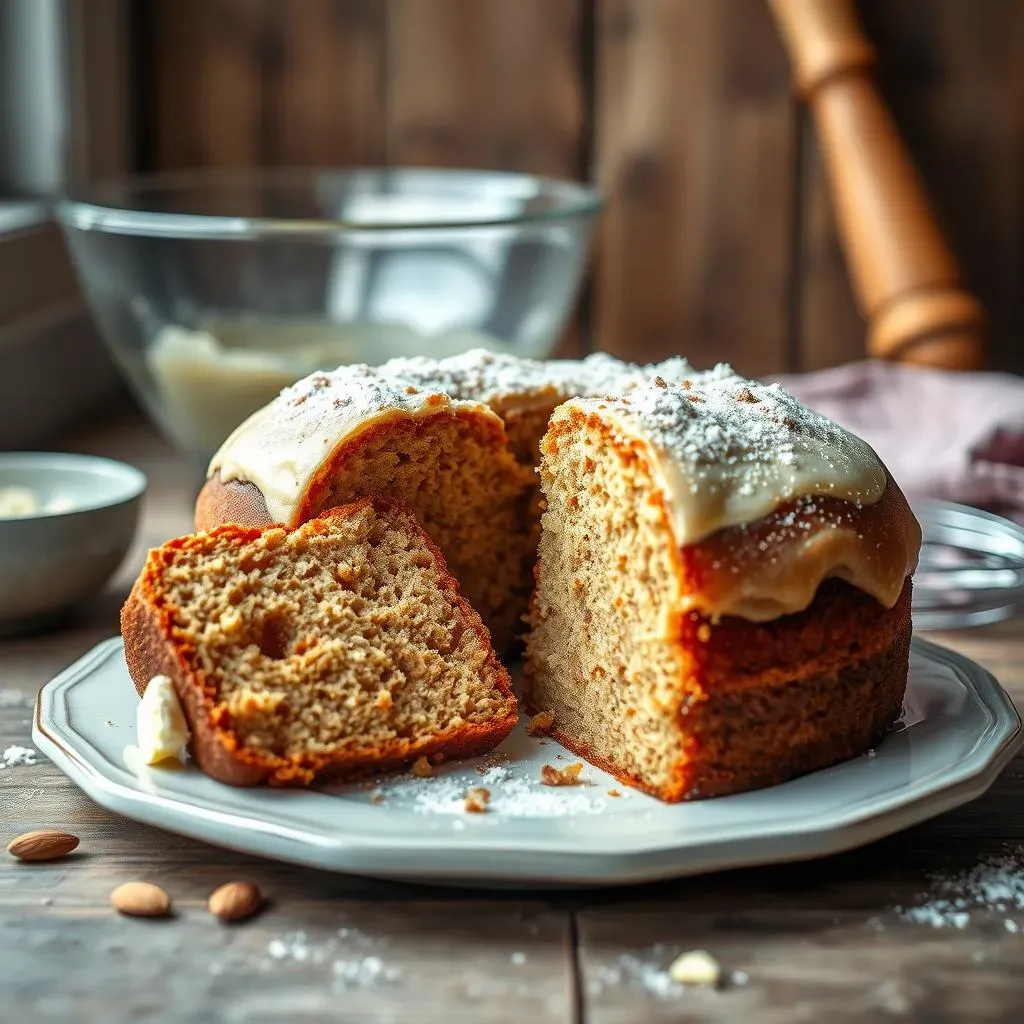Table of Contents
Dreaming of indulging in a decadent, moist keto cake without sacrificing your low-carb lifestyle? You're not alone! Many find that keto cakes can be dry and crumbly, a far cry from the fluffy delights we all crave. But fear not, fellow keto bakers! This article is your ultimate guide to conquering the challenge of "how to make keto cakes moist." We'll unravel the secrets to achieving that perfect, tender crumb, exploring essential techniques, common pitfalls, and delicious recipe variations. Get ready to discover the simple tweaks and clever substitutions that will transform your keto baking from dry and disappointing to moist and magnificent. Prepare to impress yourself (and your friends!) with unbelievably delicious keto cakes that are as satisfying as they are guilt-free. Let's embark on this baking adventure together!
Mastering Moist Keto Cakes: Essential Tips and Tricks
Mastering Moist Keto Cakes: Essential Tips and Tricks
The Power of Fat: Your Keto Cake's Best Friend
Let's face it: fat is flavor in keto baking, and it's crucial for moisture. Unlike traditional cakes that rely heavily on sugar for sweetness and structure, keto cakes need fat to deliver both. Think of it as the cake's hydration superhero! Don't skimp on the butter, oil (avocado or coconut are great choices!), or even full-fat cream cheese in your recipes. These fats not only add richness but also prevent dryness by creating a tender, moist crumb. The more fat, the more moisture you'll lock in.
Remember, we're not aiming for greasy, but rather luxuriously moist. Experiment with different types of fats to find your favorites. The flavor profiles of different fats can significantly impact the overall taste of your cake, so have fun with it!
Fat Type | Flavor Profile | Moisture Level |
|---|---|---|
Butter | Rich, buttery | High |
Coconut Oil | Subtle coconut | Medium-High |
Avocado Oil | Mild, neutral | High |
Egg-cellent Binding: The Secret to Structure
Eggs aren't just for breakfast! In keto baking, eggs play a vital role in binding the ingredients together and creating structure. They also add moisture to the batter, contributing to a tender crumb. Make sure you're using high-quality, fresh eggs for the best results. Room temperature eggs incorporate better into the batter, leading to a smoother, more evenly distributed mixture. Don't underestimate the power of a well-whisked egg – it's the foundation of a great keto cake!
Consider adding an extra egg yolk or two to your recipe for extra richness and moisture. The yolks are particularly rich in fats that contribute to a more decadent, moist texture. Just remember to adjust the liquid in the recipe accordingly to maintain the right consistency.
- Use fresh, room-temperature eggs
- Consider adding extra egg yolks for extra richness
- Whisk eggs thoroughly before adding to the batter
Embrace the Almond Flour Magic: The Right Flour for the Job
Almond flour is a keto baking staple, but even this versatile ingredient requires a bit of finesse. Different brands of almond flour have varying levels of moisture content, so pay attention to the brand you're using. Some almond flours are finer than others, which can affect the texture of your cake. Finely ground almond flour tends to produce a denser cake, while coarser almond flour can lead to a slightly more crumbly texture. Experiment to find your perfect match!
Don't be afraid to experiment with blends! Combining almond flour with other keto-friendly flours, such as coconut flour or flaxseed meal, can add unique textures and moisture levels to your cake. For instance, coconut flour is very absorbent, so using it in moderation can help soak up excess moisture and create a more balanced texture.
Troubleshooting Dry Keto Cakes: Common Mistakes and Solutions
Troubleshooting Dry Keto Cakes: Common Mistakes and Solutions
Over-Baking: The Enemy of Moistness
One of the most common culprits behind dry keto cakes is over-baking. Keto cakes, especially those made with almond flour, can bake faster than traditional cakes. The lower moisture content means they dry out more quickly. Always start checking for doneness a few minutes earlier than your recipe suggests. A toothpick inserted into the center should come out with just a few moist crumbs attached, not completely clean.
Use a reliable oven thermometer to ensure your oven is at the correct temperature. Oven temperatures can fluctuate, and even a slight difference can impact baking time and moisture levels. Invest in a good quality oven thermometer for consistent results. Don't open the oven door repeatedly during baking, as this can cause temperature fluctuations and lead to uneven baking.
Sign of Overbaking | Solution |
|---|---|
Dry, cracked top | Reduce baking time next time |
Toothpick comes out clean | Check for doneness earlier |
Edges are browned too quickly | Lower oven temperature slightly |
Incorrect Ingredient Ratios: Finding the Perfect Balance
Keto baking often involves precise measurements. The ratios of fat, eggs, and flour are particularly crucial for achieving a moist cake. Too much almond flour can lead to a dry, crumbly texture, while too little fat can result in a dense, dry cake. Make sure you're using a reliable kitchen scale to measure your ingredients accurately. Slight variations in measurements can significantly impact the final result. Even a small difference in the amount of liquid can alter the moisture content.
Always follow the recipe instructions carefully, especially when it comes to the order in which ingredients are added. Some recipes call for specific mixing techniques to ensure proper emulsification of the fats and liquids. Failure to follow these instructions can lead to a dry and less-than-ideal texture. Don't be afraid to experiment once you've mastered a basic recipe, but start with precision.
- Use a kitchen scale for accurate measurements
- Follow the recipe instructions carefully
- Adjust liquid amounts if necessary
Recipe Ideas for UltraMoist Keto Cakes: Delicious Variations
Recipe Ideas for UltraMoist Keto Cakes: Delicious Variations
Classic Chocolate Decadence: A Keto Twist
Let's start with a crowd-pleaser: chocolate cake! The richness of cocoa powder naturally adds moisture, and we can boost it further. Use full-fat coconut milk instead of water in your batter; it adds incredible richness and moisture. Don't be afraid to experiment with different types of chocolate – dark chocolate, milk chocolate, even a touch of white chocolate can create unique flavor profiles. Consider adding a dollop of sour cream or Greek yogurt to your batter; it adds moisture and a lovely tangy counterpoint to the sweetness. For extra richness, incorporate melted dark chocolate into the frosting.
Remember, the key is balance. Too much cocoa powder can make the cake dry, so start with a recipe you trust and adjust to your preferences. A good quality cocoa powder makes a difference in both taste and moisture. Consider using Dutch-processed cocoa powder for a richer, less acidic flavor.
Ingredient | Moisture Boost | Flavor Enhancement |
|---|---|---|
Full-fat Coconut Milk | High | Coconutty richness |
Sour Cream/Greek Yogurt | Medium | Tangy counterpoint |
Melted Dark Chocolate | Low (but adds richness) | Intense chocolate flavor |
Citrus Burst: Lemon Poppy Seed Keto Cake
For a lighter, brighter option, consider a lemon poppy seed keto cake. The acidity of the lemon juice helps to tenderize the crumb, preventing dryness. The poppy seeds add a delightful textural contrast and subtle nutty flavor. To keep the cake moist, use a combination of almond flour and a small amount of coconut flour. Coconut flour is incredibly absorbent and can help to balance the moisture in the batter, preventing a dry crumb. A lemon glaze adds extra moisture and a beautiful finishing touch. The glaze also helps to seal in moisture and enhance the cake's flavor.
Don't be afraid to get creative with your citrus additions! Lime zest and juice can be substituted for lemon for a completely different flavor profile. You can also experiment with other keto-friendly additions like berries or even a hint of cardamom. Remember to adjust the sweetness according to your preference. The natural sweetness of the citrus cuts through the richness of the almond flour, preventing the cake from being overly sweet.
- Use a combination of almond and coconut flour
- Add lemon zest and juice for brightness
- Finish with a lemon glaze for extra moisture
